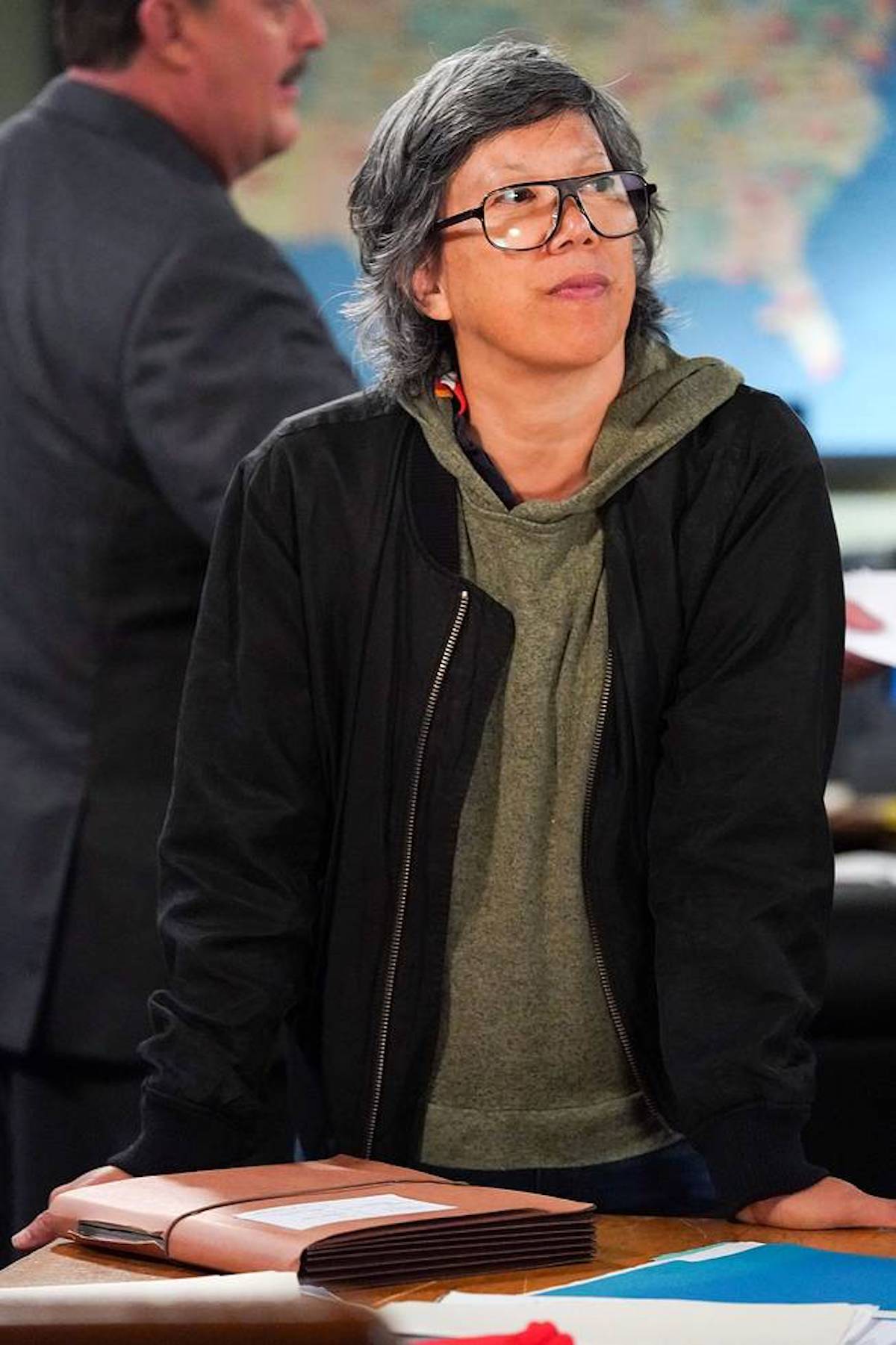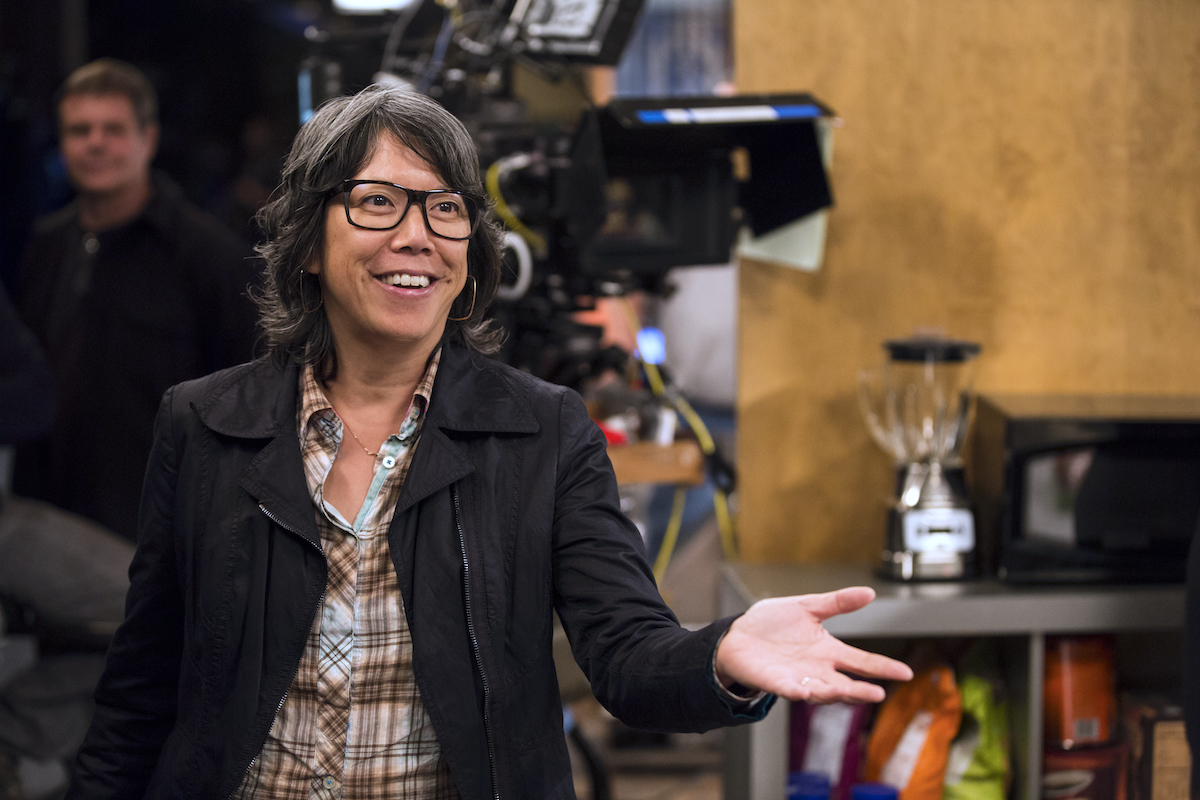With her second Primetime Emmy nomination in tow, Patti Lee, ASC, has helped to change the face of multi-camera television one shot at a time.
by David Geffner / Featured image from Sean Saves the World by Chris Haston/NBC
I first met Director of Photography Patti Lee, ASC, roughly twenty years ago on the indie film fest circuit for a feature she had shot called Bunny, directed by Mia Trachinger with a crew comprised of mostly fellow UCLA film graduates. And minutes after falling into a conversation, I knew this was a person who would make some deep footprints in our industry. Full disclosure: I had no idea Lee would go on to add an ASC after her name, be nominated for two Primetime Emmys, in the multi-camera sitcom format of all places, or marry a fellow two-time Emmy-nominee, director Jennifer Arnold – but I could tell Lee was special, in the best sense of that word.
Smart, warm, friendly, and eager to soak in as much new knowledge about cinematography and lighting as her various mentors would end up providing, Lee has, over the last two decades built a resume that includes some of my favorite oddball comedies – Sean Saves the World, Superior Donuts, Bob Hearts Abishola, as well as the new reboot of Mad About You. On the eve of the (strangest) Emmy awards presentation Hollywood has yet to offer, ICG Magazine jumped on the phone with Lee to talk about her brilliant career, including key aspects like lighting for the multi-camera format, inclusivity on set, and why she may have broken the hearts of her Chinese-American parents when she chose filmmaking over medicine.
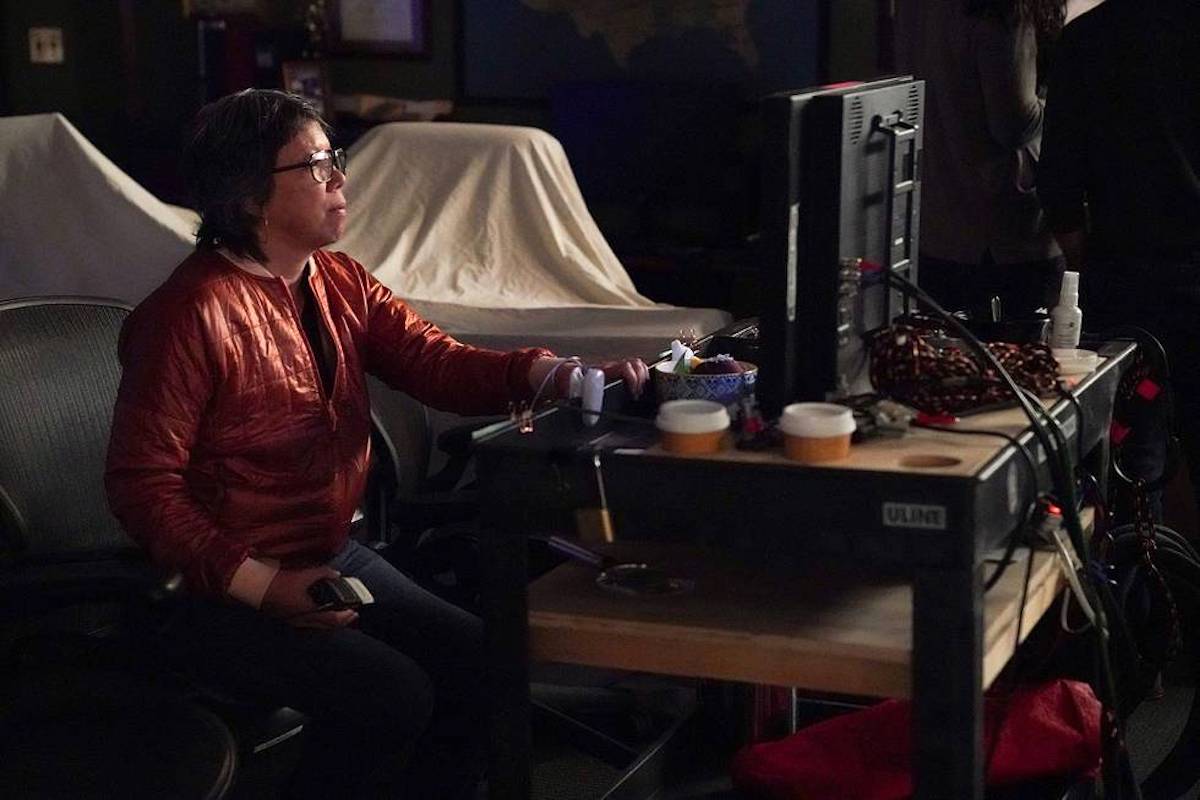
ICG Magazine: I think Patti Lee has a pretty cool origin story – can you share it with our readers? Patti Lee: When I got to UCLA I was undeclared, but I was always wrestling between a medical career and the arts, which are totally opposite majors. Undergraduate film school at UCLA doesn’t start until you’re a junior, and I was fairly blind to how hard that might be. So I just thought: I’ll do all my requirements for [both medical and film school], as who knows where I might end up? Then, after I took Chem-11A [Chemistry] at UCLA, I realized medicine was not for me [laughs]. We had fifteen people that were accepted into the film school that year, and I was, fortunately, one of them! Back then, you were accepted with a portfolio of written work, not with actual films, so I did a little bit of everything to try and dazzle them with my diverse abilities – I guess it worked [laughs].
So you had no prior experience, technical or otherwise, with making movies before you got into film school? My dad had an 8mm camera, but that was his thing and we never touched it. My sisters and cousins and I would go to my grandparents’ house every Monday and put on a show for the adults. We’d dance, sing, and play characters on The Newlywed Game! I did do a lot of theater in high school, but that just didn’t seem like a viable option in terms of making a living. Growing up in Southern California, you know there’s a large industry with, hopefully, a lot of jobs, making movies and television – so I picked film school. Within a very short time of starting at UCLA [film], I fell in love with cinematography.
Did other filmmakers from your UCLA class enter the industry? Actually very few, if any, from my class are still doing this. But what happened is that I kept shooting UCLA thesis and short films for people, and I kept meeting the next graduating class and the next and the next…I’m still best friends with all of those people, including my wife, whose UCLA thesis film I shot.
You did not go directly into cinematography – you started in set lighting and as a gaffer. Yes, I didn’t get my first paid gig as a cinematographer until The Bernie Mac Show, which was like 2004. I started in grip and electric because I knew I wanted to be a cinematographer, but those jobs were so few and far between. What happened is I got a call from a DP at USC who was part of a group making a feature, and they put me in grip and electric. No one on that crew really knew what they were doing, but by the end of the film, I was tying into the [location house] for power.
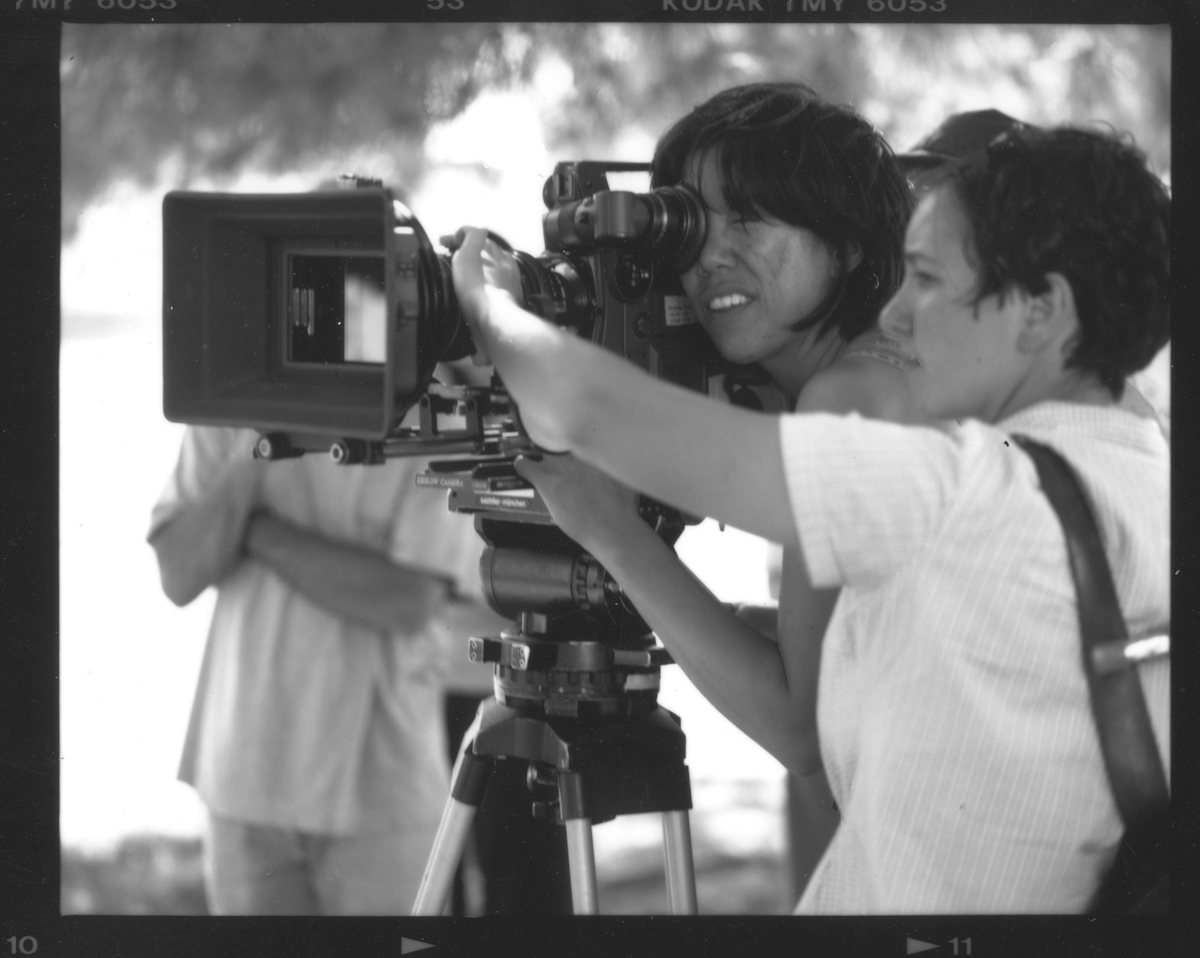
We met after you had just shot Bunny, which got some nice attention on the indie film circuit. Did that film propel your career in any way? Bunny did nothing for my career [laughs]. But it was a confidence builder, and I got to travel around with Mia Trachinger, the director, and Rebecca Sonnenshine, the producer, to different festivals, where I met a lot of filmmakers who are still friends. Bernie Mac was the first opportunity that allowed me to do more in a legitimate setting; and once you get your first opportunity on a network sitcom, others will follow. It’s that first one that’s so hard to get.
Bernie Mac is when you joined Local 600? Right. I was already a member of [IATSE] Local 728 [Electric] before that, as I started on Bernie Mac as a gaffer. I started bumping up when [Director of Photography] Victor Nelli, Jr. bumped up to direct. At a certain point, Victor started taking off as a director, and on Season 4, I shot a third of the episodes, and on Season 5, I took over as DP. Bernie Mac was single camera, which is all I had been doing up until that time. In 2008, Bernie requested me to shoot a new sitcom for him, which was multi-cam, but it didn’t get picked up. That was the show where I met [director] Andy Ackerman, who I later worked a lot with.
Did you feel there weren’t very many people who looked like you when you started in multi-cam? [Laughs.] There were not a lot of females, nor Asian-Americans of any gender on-set when I started in multi-cam. But, it didn’t seem like that mattered very much in moving forward in my career – experience was the big key. Having said that, when I was a gaffer I was very much an anomaly. People were fascinated by me on set, and they’d want to come up and talk – but I needed to finish working! Sometimes I’d show up on set with my tools, and people would ask… “are you hair or makeup.” And, I’m like, really? Do I look like that’s the department I should be working in?”
Did that change as you booked more shows? Yeah, it definitely changed. But the people who would have had a problem with me because of my gender weren’t going to hire me anyway, so I wouldn’t even know if that was an issue. I was always very serious about my job and did my homework; and I was always a good manager of people, so I feel like I proved myself [to those hiring].
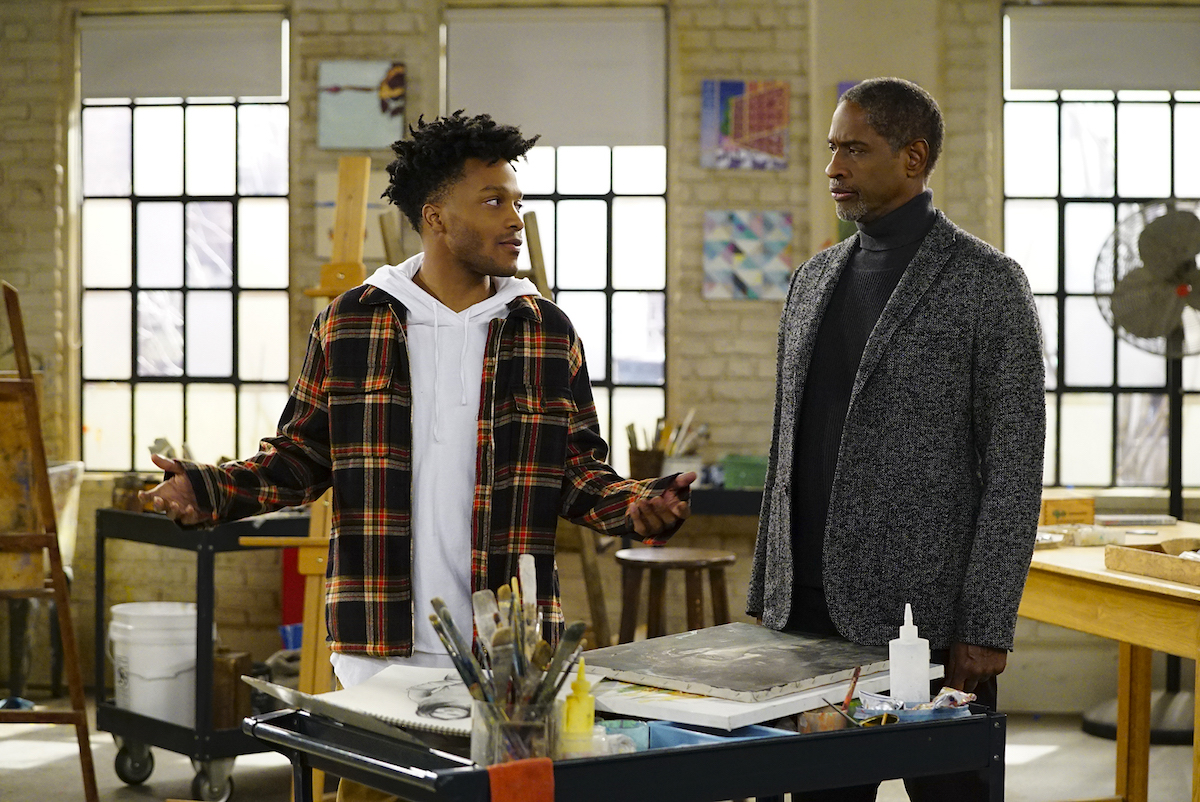
What was the next benchmark after Bernie Mac? It would be falling into doing multi-camera on a regular basis. The format is so different than single-camera. When I started working with Andy [Ackerman], it took much less effort to get multi-camera work. I was in a different pond where you don’t cross-over to episodic very much. I was kind of a mystery, being one of the only women in multi-camera – Brianne Murphy paved that road, of course – so people were curious about me. Whitney was the first real multi-cam series I did – two seasons, with the second season being shortened.
Who were your mentors in multi-cam? George Mooradian let me come to his set for According to Jim, to see what he had up in the air, how the run-throughs worked, and just the basic vibe of the set. So, when I did the Bernie Mac pilot, I knew I wanted to apply my single-camera experience and make it as cinematic as possible. We shot on film, which wasn’t normal as multi-cam had already gone to video. With multi-camera shows now all shot digitally, everything is instant gratification. But back then it was a video-tap, so I really had to trust myself. I remember we had a wide range of characters on set, and I couldn’t figure out why it was always getting so dark! Turns out when the wing cameras, which had 2000-foot mags, would pan across the stage, they’d completely block my fill light [laughs].
So where do you position yourself on today’s multi-cam set? I have a cart with a monitor, which allows me to switch between each camera or the quad split. For me, I like to stay on the floor, because if I’m tucked away in a room, I can’t hear what’s going on. The associate director gives each camera person their assignment, but I’ll go up to the operators between takes, or pass things on through the headset if I need them to adjust. I will also talk with the associate director if we need to have a different approach.
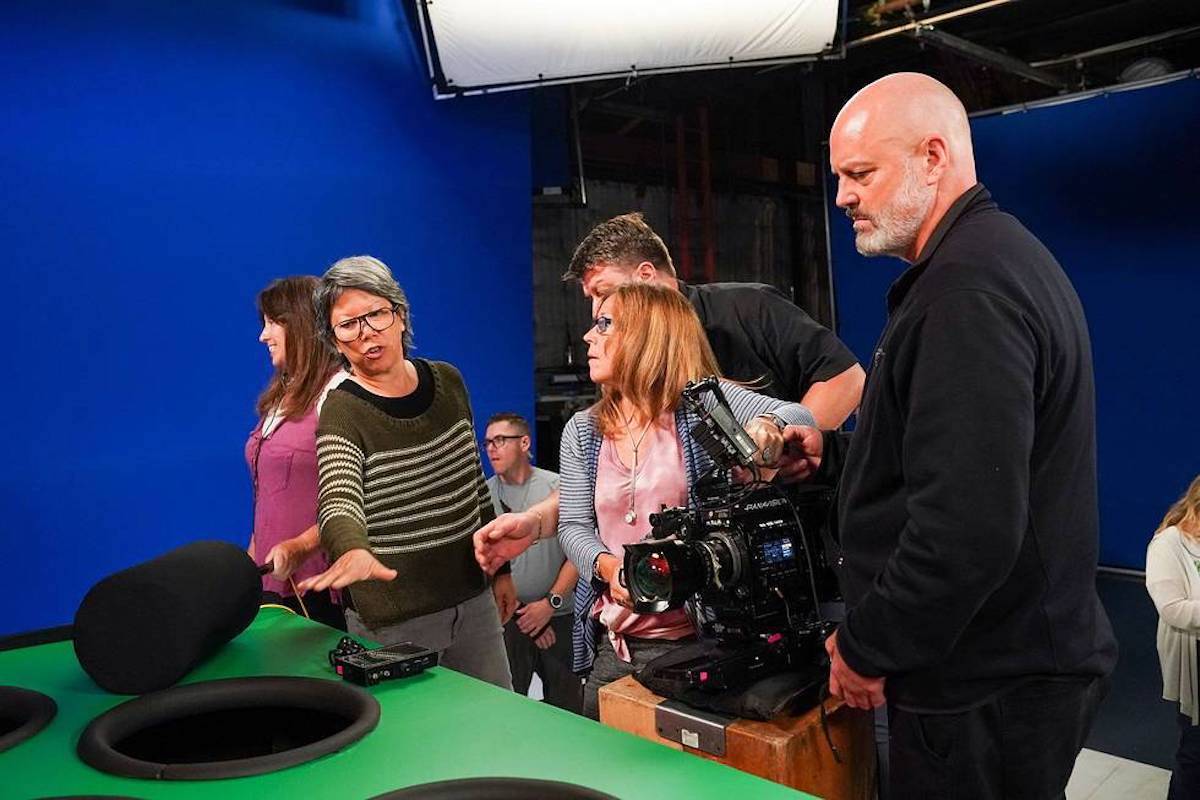
The format feels like a hybrid between live event/reality and scripted narrative, particularly with the lighting. My lighting experience includes many different genres – indie features, music videos, reality TV – and I feel like that’s provided me with many situations where I need to figure out how to light for multiple cameras, in an uncontrolled, or rather a controlled kind of chaos. I will say that multi-camera is not on the cutting edge, technology-wise. When we find something that works, we stay with it – for a while [laughs]. Right now, we’re using the Sony F55’s, which are great cameras. Typically, you have a video controller who helps dial in the color as you go. On Bob Hearts Abishola, we’re not baking everything in – we’re capturing Log, and then doing more of our work in the final color grade. I’m always in those grading sessions as I like to make sure it doesn’t go too bright in the edit bay, or that anything I’ve added that’s special to the scene, doesn’t get taken away. The tendency is for colorists to tamp down anything hot, but I like putting in something extra-hot in multi-cam lighting.
What kind of lensing you do typically use? For the most part, I like to use a Panavision 11:1 zoom on my A and X cameras, and on the two center cameras – B and C – I’ll use the Fujinon 19-90mm. That’s changed around through the years, as I have used the Fujinon 20-120 in the past. But it’s a little slower of a lens and I do like to shoot wide open – usually at a 2.8/4 split. We do have a DIT in multi-cam, but that job is different than in single camera. The DIT doesn’t handle color or media management. That person functions more like an engineer, handling all your equipment needs, and everything is running smoothly, gear-wise.
Do your directors in multi-camera rotate like episodic, leaving you and the showrunner as the main visual constant? They can rotate. But I’ve been fortunate to be on shows like Bob Hearts Abishola, where Beth McCarthy-Miller has done all the episodes; or the shows I did with Andy Ackerman, who generally did all the episodes. I do prefer the single director approach as shorthand gets established that I think serves the visual look over time.
We can’t pretend to know what makes Emmy voters tick; but was there anything about the two episodes you’ve been nominated for – Superior Donuts in 2018, and Bob Hearts Abishola in 2020 – that were special? Both episodes had nighttime elements, allowing for things you might not normally see in a multi-camera set. Superior Donuts was challenging because one of the scenes has Franco [Jermaine Fowler] stuck up on a billboard at night. It was something that got written in at the last minute, so when we were pre-lighting, it was an empty stage as the set wasn’t built. We put tape marks down where the billboard would be, and the walls would probably be around here [laughs]. I spent a lot of time thinking about how to make the scene feel natural; having Jermaine be hit by the billboard light with the falloff in the right place I remember asking the painters to put more pigeon poop on the railing to make it feel more like a real building! For Bob Hearts Abishola, we had some very dark scenes that felt more cinematic, as well as some special camera moves. There’s no audience on that show, so the writers can put in a lot of locations. That makes for challenging sets, like when we brought a real city bus onto the soundstage with blue screen. Where do you hide four cameras, rolling all at once?
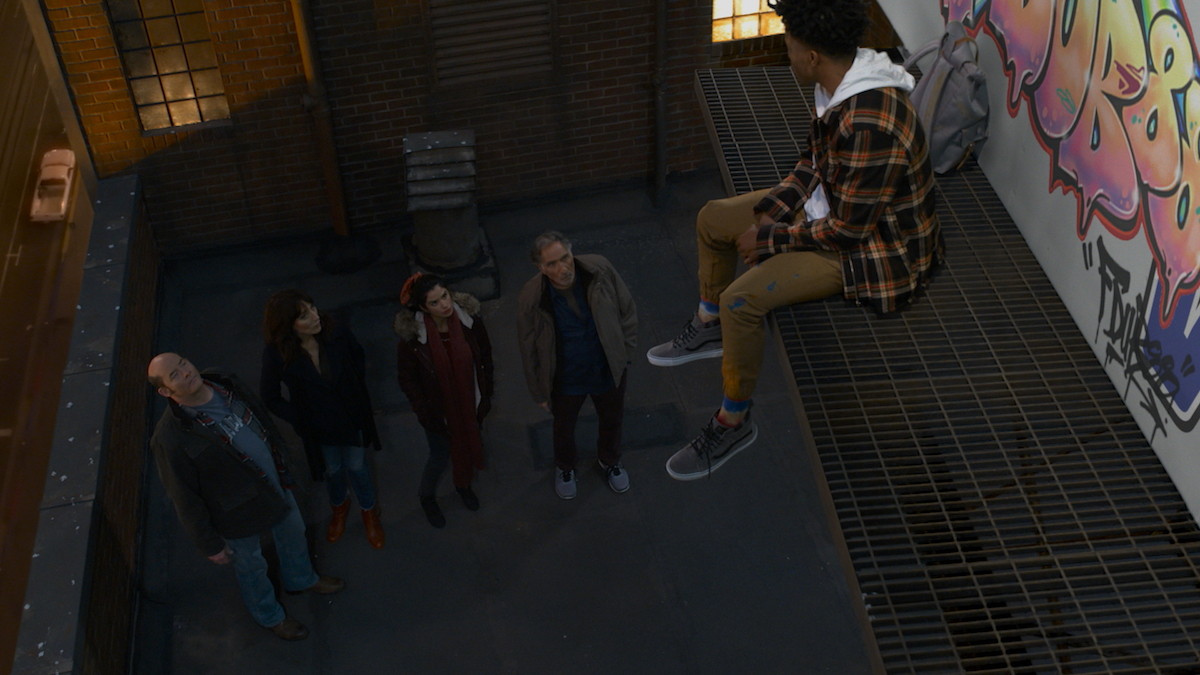
You recently did the Mad About You reboot – what was that like? I was a huge fan of the original show. I remember doing an ENG shoot in the ’90s where I got to be on that set, and I was super-stoked! When the reboot came around, it was lovely being asked to do that and meeting Helen and Paul. But it was a little surreal lighting the same house I’d seen on television for so many years. We have the same backings that were used on the original. Bobby Byrne was the DP of the original show, and they loved how it looked toward the end of its run. They asked me: “what do you want to do to make it look different?” I said: “if you love it so much it shouldn’t look that different. The sets will all be updated, as are the camera systems.” They wanted it to look familiar but not stuck in 1997.
I went on the ASC website and counted 15 active female members, every single one of whom I know. You’re the only Asian-American female and the only active female member in multi-cam. [Laughs.] I keep waiting for another female DP to show up [in multi-camera] but they never seem to come. It is one of the best jobs in Hollywood. The hours are great, you go home for dinner; everyone on a multi-cam set is really happy and it feels like a family atmosphere. [Pause.] I got into the ASC about 18 months ago. I was sponsored by George Mooradian, Johnny Simmons, Chris Chomyn, Wayne Kennan, and Steven Poster; Steven had asked me earlier on in my career if I wanted to be sponsored but I didn’t feel ready for it.
What’s the dinner table conversation like between a woman who shoots multi-cam and her wife, who directs one-hour dramas? [Laughs.] Well, if you’re asking do we both long to swap careers, I certainly don’t. I love having a very scheduled day, not having to travel or work 16 hours. I also get to hire a lot of people in multi-camera, between camera, grip, and electric. We have four dollies, so that’s four operators, four First ACs, four dolly grips, two utilities, a DIT, a video controller, a second AC, and then a gaffer, key grip, two best boys, a board operator, and three of each. Because shows will shoot on different days, I can keep two crews working all the time, which is what we did on Mad About You and Bob Hearts Abishola. That’s a lot of people in multiple unions I keep employed – something of which I’m extremely proud.
Given that kind of hiring power, do you feel a responsibility to bring more inclusivity to your sets – like gender, race, and LGBTQ union members? I definitely do. I co-chair the ASC’s Mentorship Committee with Todd Dos Reis, which is part of the Vision Committee, and we’re putting our money where our mouth is by trying to create more inclusive sets. I’ve been pushing for all my sets to look more like the world-at-large. Helen Hunt, on Mad About You, was striving for that same kind of diversity across all of our departments.
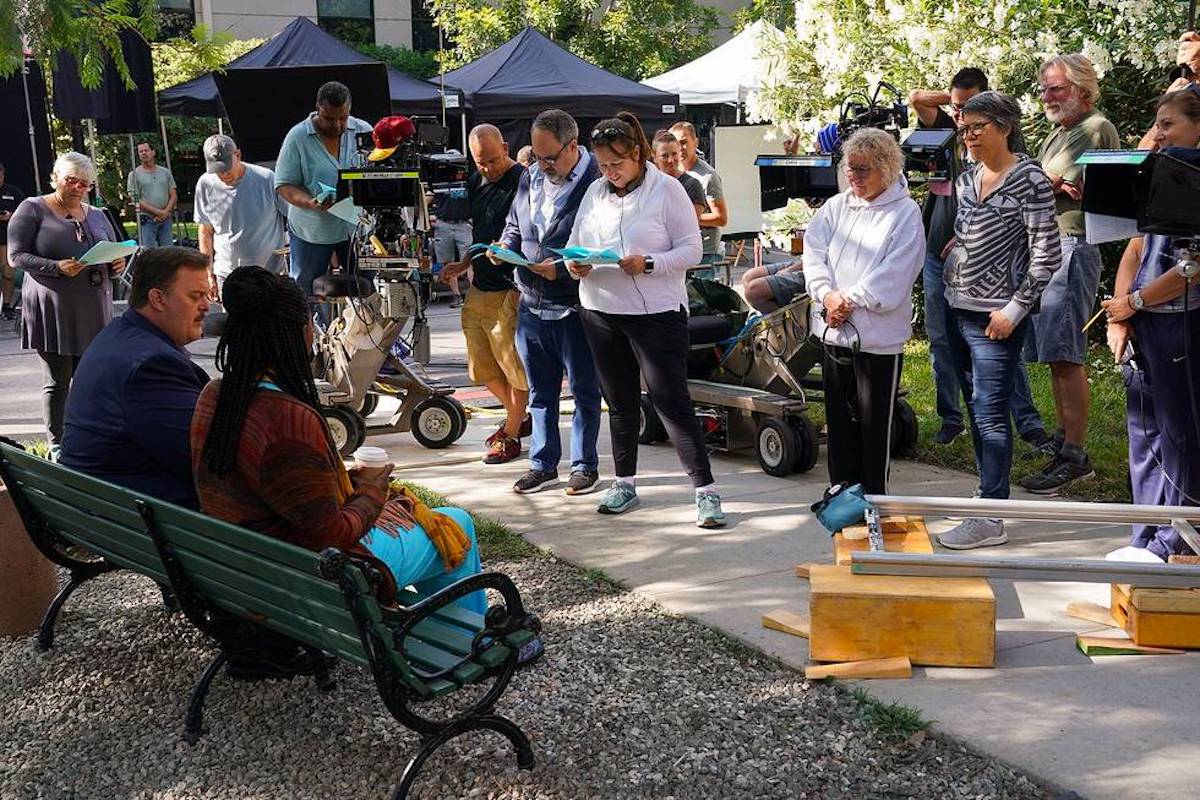
Have you worked toward bringing more Asian-American filmmakers, second-generation people like yourself, who grew up in L.A., into this industry? I used to do seminars for Visual Communication’s Armed With A Camera workshops. With this year’s ASC Vision Mentorship Program, Todd and I awarded almost 100 mentorships, with more than 650 applications. The difference between last year and this year is just how much more diversity there is. Many more women in our ranks as mentees, and many more Asians and people of color applying from all over the world, which is great.
Given how many people you hire across camera, grip, and electric, I’m sure you want your sets to be as safe as possible. How should that look when the industry gets back to work? I’ve already had a Zoom meeting with my camera department on Bob Hearts Abishola to hear about their concerns, like any special equipment that may be required. Traditionally on a multi-cam set, the AC will be right next to the camera operator, who’s right next to the dolly grip, and that’s four cameras in close proximity. We’re going to remote our camera assistants back to give them some space; everyone will have to wear their PPE and once the dolly grips are done doing their move, they’ll have to step back. I’ve been getting calls from my crew, who have been working on other productions, asking about issues they’ve encountered, and I’ve tried to be a sounding board. The actors need to be safe, as well, of course, so we’re trying to figure out the best way to proceed.
Will the pandemic have a long-lasting impact on the creative process? It might mean a lot more VFX, like for background players, who are the people who rotate through and we know the least. The writers may well continue to write some crazy stuff, and, as always, it’s up to the production team to figure out how to pull it off. I look at this as just another challenge, as opposed to something catastrophic or long-lasting.
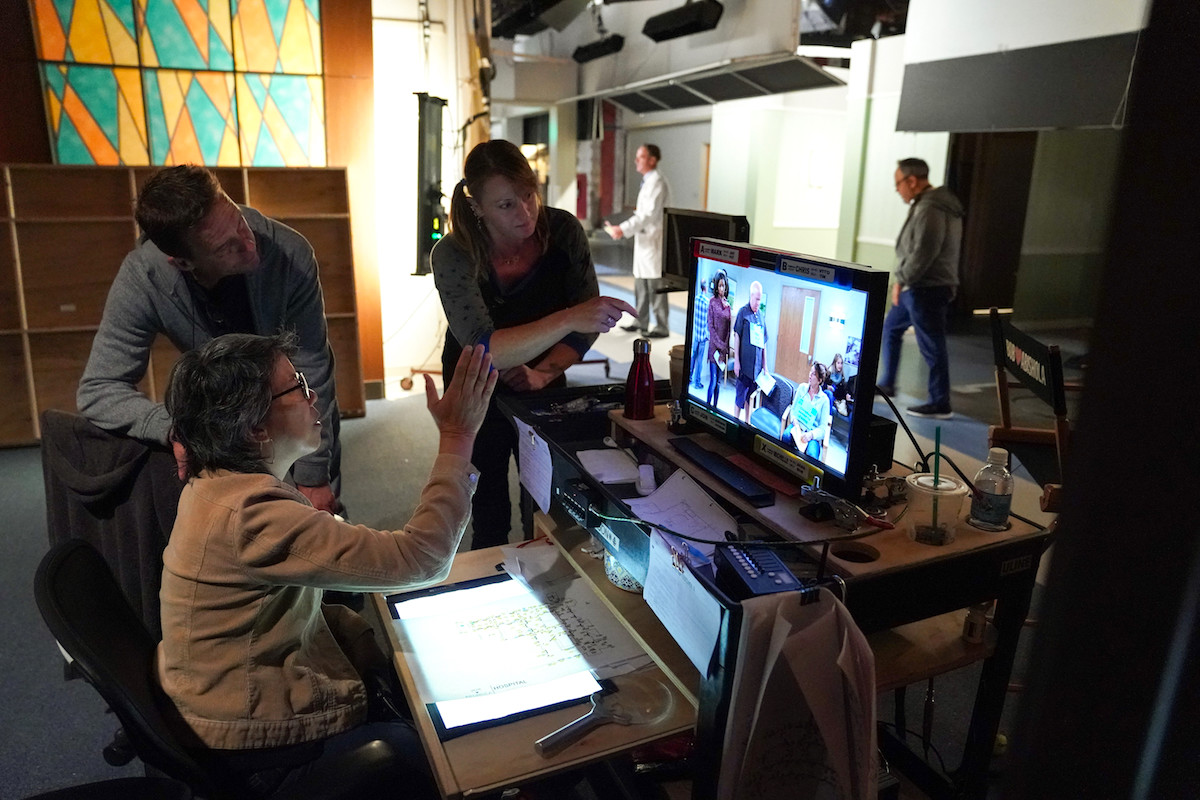
Has Local 600 been of assistance to you and your crew during this time? They’ve been very pro-active about making sure our members have accurate and timely information, which I really appreciate. Having these newsletters come out all the time is great, and the videos from [President] John [Lindley] and [National Executive Director] Rebecca [Rhine] makes me feel like this union truly cares about its membership; that we’re protected and looked after.
Moving forward, how will newer digital workflows – 4K and HDR, for example – impact multi-camera shows? The first time I shot 4K I was alarmed! We’re always trying to make the look [in the multi-camera format] softer and more forgiving, for the actors, of course. Generally, I don’t see the need for anything above 4K, which companies like Netflix and Sony now mandate. We work mainly on soundstages, where we can control the lighting; control the highlights, so I don’t see the benefit of even higher resolution workflows. And with 4K, the DP’s actually lose some control because now in post they tend to punch in however tight they want. I haven’t worked an HDR show, but that would certainly mean I’d have to tone down those hot spots I like to put on our walls before we even get to the color bay.
True or false: the comedic moments that break up the crew on set are just as funny at home when the episode airs? False! There have been many times that I’ve laughed out loud at something on set, and then when I see it at home, I’m like: “that’s not that funny, is it? [Laughs.]
